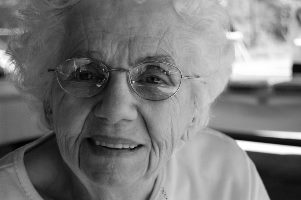The IoT technology on the market helping to make ageing at home a reality for seniors

Recent estimates by the AARP suggests that up to 90% of seniors prefer to stay in their own homes. In response, technology has been moving to address this and make it a safe and feasible reality for a growing senior population.
With the Internet of Things (IoT) industry estimated Continuous Glucose Monitoring (CGMs) to hit US$212 billion (€190.36 billion) by the end of 2019, it is safe to say we have seen a true technological revolution in recent years, Jocelyn Brown. We have seen IoT transform the workplace, revolutionise the health and nutrition world, introduce the concept of smart cities, and now introduce a way to help seniors live a healthy and independent life in their later years. When it comes to helping seniors age well and at home, major markets such as the UK and the USA are rich in IoT devices, all of which address the ageing at home concerns of seniors and their loved ones.
Sensor-enabled tech for routine household tasks
By 2021, 28% of homes are estimated to be smart homes, and the global smart home market is set to surpass $60 billion (€53.87 billion), according to a TechSci Research report. More than 2 in 10 seniors admit that they find it difficult to stay in their homes because of not being able to accomplish daily tasks on their own, such as heading to their grocery store or cleaning their home. Both seniors and professional cleaners can utilise AI-powered tools such as robot vacuums for their regular cleaning needs, reducing the burden of household tasks on seniors.
In the kitchen, sensor-equipped containers and appliances can be used in conjunction with other innovations like Amazon’s shopping list app to alert and automatically add needed products to a shopping list or weekly shopping delivery. Meanwhile, smart monitors and alarms like those from Birdi can alert seniors or their designated carer of toxic smoke or carbon dioxide levels with a simple text message or automated call.
Smart home surveillance cameras
For those seniors on their own and their loved ones, there is a constant worry of them getting hurt or needing help whilst they are alone. Smart home surveillance cameras such as the models from Arlo, Blink and Nest allow homeowners and authorised persons to check in on their elderly loved ones at regular intervals during the day. With incidents such as falls occurring to at least one-third of seniors every year, this technology can ensure that help gets to them should they need it.
In addition, most models allow for a mobile application, which means accessing the video footage at any time – even when travelling. These surveillance cameras also help to protect and monitor homes against theft and burglaries in the homes of seniors, who are more likely to be targeted in home burglaries.
IoT-enabled healthcare appliances
Healthcare innovators are also jumping on board to help seniors with a key need in their later years: healthcare. For seniors living with diabetes, there is now a smart sock and foot monitoring system being sold by Siren that tracks skin temperature and alerts patients of potential inflammation and developing ulcers.

Jocelyn Brown
At home, medication trackers and reminder systems are now commonplace. Recent models now allow for connectivity with carers or loved ones so that they can make sure medication is taken on time. These systems can also alert seniors (and carers) of missing a dosage or pending medication renewals, which come in particularly useful for the 40% of seniors with age-associated memory loss.
Finally, Smart Continuous Glucose Monitors (CGMs) from brands such as Eversense allow seniors to continuously monitor their blood glucose levels, which are then transmitted to a mobile app for them to check. The app also includes features that allow detection of trends, helping seniors pinpoint any impending issues that mean they should contact their physician. Around 59% of seniors now own smartphones, so IoT innovations like these are a perfect fit in addressing their healthcare needs and helping them remain at home for longer.
The uses do not stop here either. IoT is helping seniors stay healthy in all aspects of their lives, from the kitchen to their exercise routines. The application of IoT technology continues to expand, and with it, the feasibility of ageing at home for seniors becomes much more of a reality.
The author of this blog is Jocelyn Brown, a freelance technology writer
About the author
Jocelyn Brown is a freelance writer and mother. She loves the freedom that comes with freelancing and the versatility it allows her in covering many different topics and themes. When not at work she enjoys running, hikes in the country and making the most of family time.
Comment on this article below or via Twitter @IoTGN
